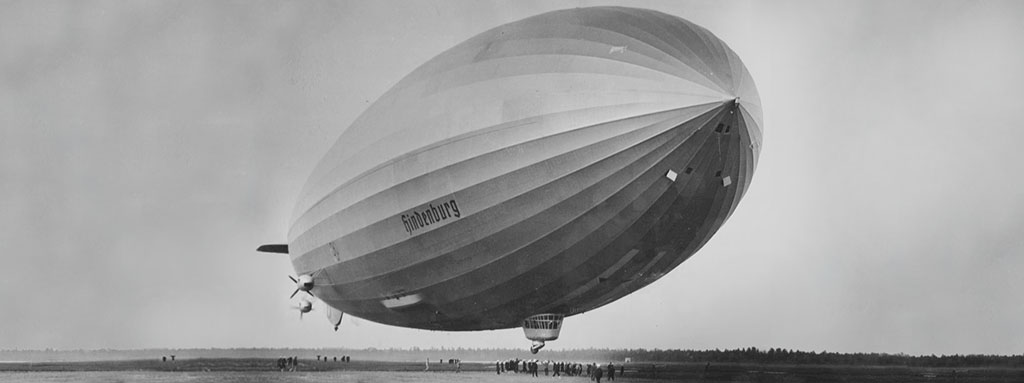On 6 May 1937, the German airship LZ 129 Hindenburg was approaching the Lakehurst Naval Air Station, New Jersey (United States) from Frankfurt (Germany), after three days of travel, flying over the Atlantic.
At the beginning of the 20th century, airships dominated passenger air transport. Now they are returning with new impetus thanks to today’s technology.
On the ground there was great excitement as crowds awaited the landing, since this was the first transatlantic passenger flight landing in the United States that year. It began to descend before the eyes of a large number of people, including journalists, photographers, cameramen and radio announcers, when suddenly it ignited, and was totally engulfed by flames in less than 40 seconds, according to the testimony of witnesses. Subsequent studies consider that the time it took to catch fire may have been even lower. The main reason for the fire is that it was filled with hydrogen, a highly flammable and explosive gas.
The Hindenburg, symbol and pride of the German Nazi regime, was the largest aircraft built up to that time (245 meters long and 41 in diameter), and was carrying 97 people on that flight, including the crew.
Of the 97 people on board, 35 died. More people were saved than might be expected, taking into account the voracity of the flames. The reason is that most of the passengers were able to jump off moments before the airship hit the ground, and escaped before the structure fell on them.
But what was the cause of the fire? Theories abound, but the one with most support is that the origin of the fire was static electricity. Moments before the accident, there had been an electrical storm, which had led Captain Max Prüss to decide to divert the airship before landing, waiting for the storm to end, and passing over the island of Manhattan, to the astonishment of its citizens. When he decided to land, the weather had improved, but the air was still electrically charged. Witnesses to the disaster claimed to have seen a flash at the stern of the airship, just before the fire started; however, this moment has not been captured in any surviving film footage or photos. This flash may have been what is known as St Elmo’s Fire, an igneous atmospheric phenomenon that is caused by ionization of the air, for example, during electrical storms like the one experienced that day.
This was an accident with all the ingredients necessary to make it of great significance: it was spectacular, symbolic and had high media coverage. It is therefore not surprising that the German government ordered a halt in the production of commercial airships, and everyone who was developing these airships followed their example. This signified the end of this means of passenger transport, which at the time was at its peak.
Today, 81 years later, there is a desire to recover this method of transport, with a focus on the luxury tourism sector. There are companies that have developed models that are under trial and which aim to start flying with passengers on board soon. But will we ever be able to erase the memory of the Hindenburg disaster?



